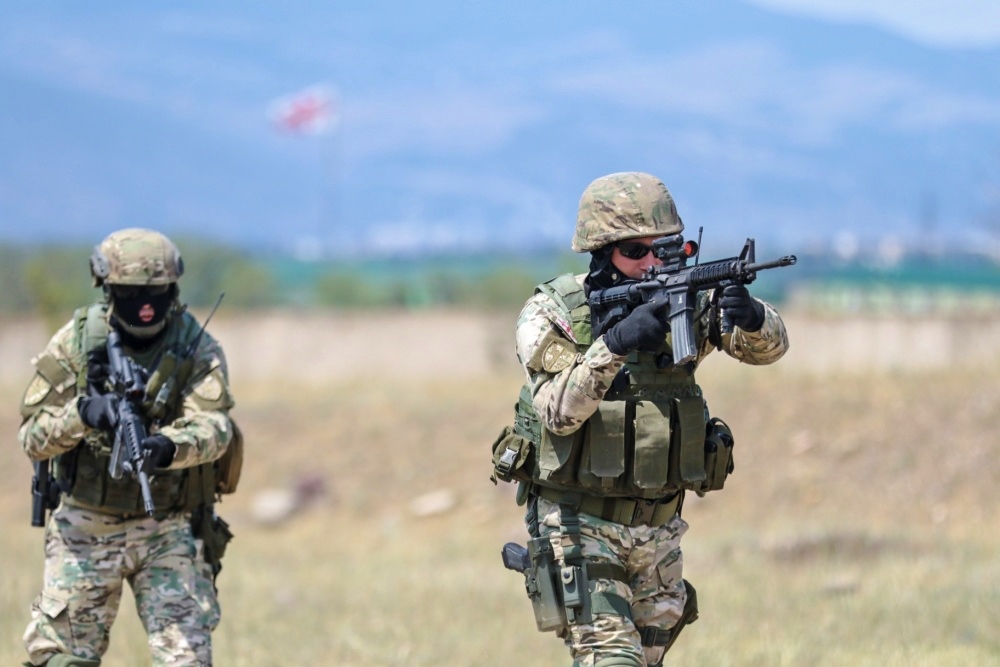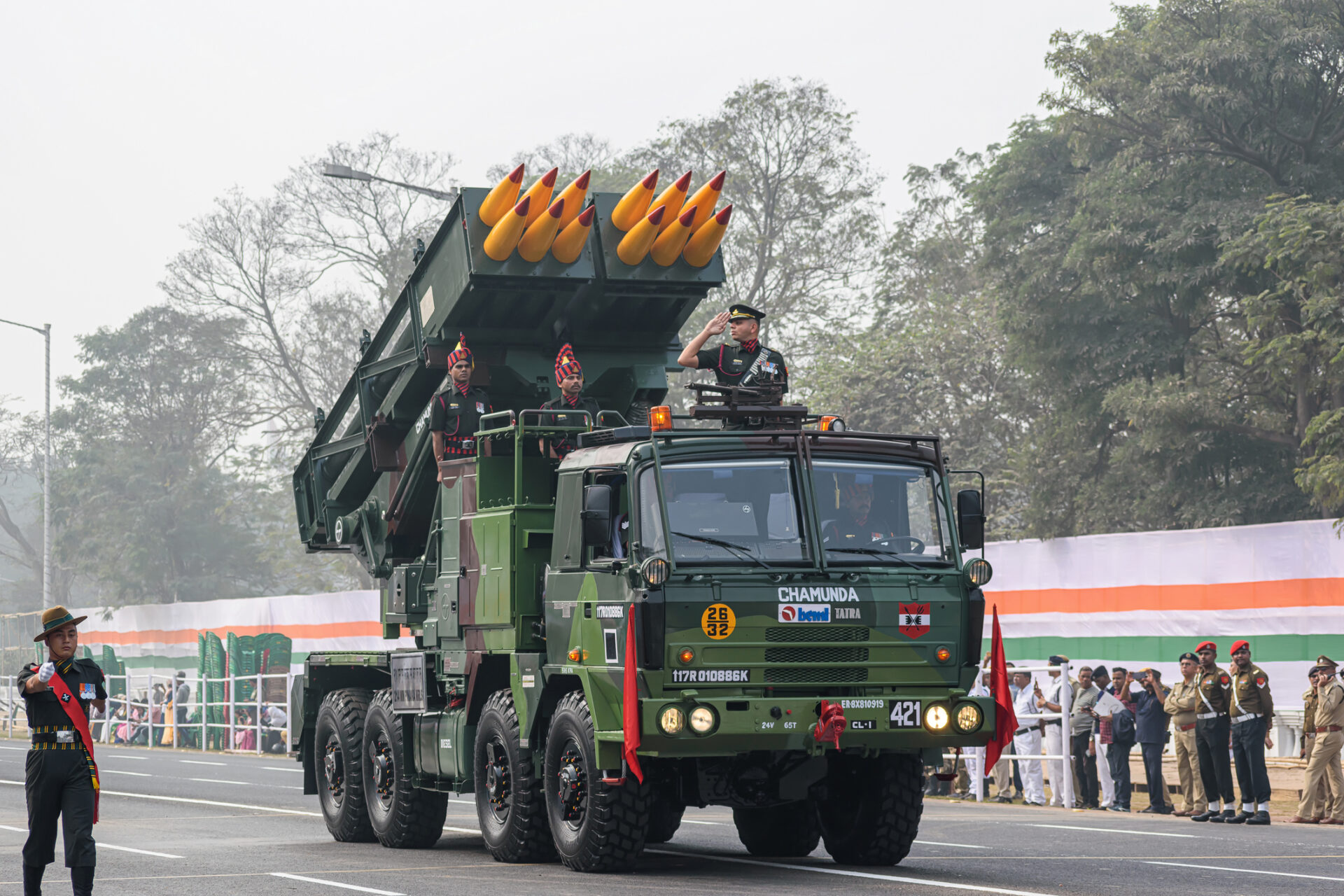
The United States Does the Heavy Lifting for NATO in Georgia
The United States Does the Heavy Lifting for NATO in Georgia
United States President Donald Trump’s behavior at the North Atlantic Treaty Organization’s (NATO) recent summit in Brussels (July 11–12) and in its aftermath has cast a shadow on this landmark event. Trump’s follow-up actions, including the meeting with his Russian counterpart Vladimir Putin, continued hitting at NATO and the European Union from afar. Trump’s persona and his possible motivations furnished the main topic of analysis throughout these events, diverting attention from the actual results of the NATO Brussels Summit. Its agenda and decisions clearly identified Russia as the main source of threats and challenges to the Alliance. The summit’s balance sheet is a mixture of significant accomplishments and unfinished business left over from years past, notably in the Black Sea region and NATO’s eastern neighborhood (see EDM, July 25, 30, August 1, 2, 7, 8, 9).
Georgia’s defense and security relationship with the United States has grown stronger, more organic, more effective and more trustworthy, compared to Georgia’s relationship with the North Atlantic Alliance as a collective entity. NATO’s policy in its eastern neighborhood and its Georgia policy has been weighed down by the “convoy principle”: it moves at the pace of the most cumbersome ships, usually Germany and France (and the Netherlands at NATO’s Brussels Summit just held). Neither NATO collectively nor its member countries (within the Alliance framework) provide Georgia with “lethal” military equipment; nor do they organize combat exercises on Georgia’s territory to build capacity for deterrence and defense.
It is the United States that provides most of the political support as well as the military training and exercises, mentoring, and increasingly the equipment, for Georgia’s military modernization. This is done on a bilateral basis. NATO’s collective programs involving Georgia are valuable and appreciated, but are of secondary significance in terms of building deterrence and defense capabilities and combat training (see below). If and when NATO finally invites Georgia to join the organization, it will be mainly on the strength of US bilateral assistance programs and successful Georgian assimilation thereof.
This relationship has been slow to reach its current stage of intensification. It is rooted in two framework documents on defense and security cooperation, brainchildren of then–US Deputy Assistant Secretary of State Matthew Bryza and then–Deputy Assistant Secretary of Defense Michael Carpenter, at the end of the George W. Bush administration and the Barack Obama administration, respectively (January 2009 and December 2016). And it has grown continually under the Donald Trump administration following Vice President Michael Pence’s August 2017 Georgia visit, which helped start the implementation of the Georgia Defense Readiness Program, the sale of Javelin anti-tank missiles to Georgia (under the US Government’s Foreign Military Financing program), and an intensification of exercise and training activity in Georgia led by the US military’s European Command (EUCOM).
The Georgia Defense Readiness Program (GDRP) and its Training dimension (GDRP-T) marks the definitive, overdue shift in focus, from counterinsurgency to territorial defense. Inaugurated by EUCOM’s commander, General Curtis Scaparrotti, at the new Combat Training Center in Vaziani, Georgia, in May 2018, and operated by US Army officers, this three-year program aims to advance the combat readiness of Georgian infantry units for territorial defense. It envisages manning, equipping and training nine maneuver battalions (infantry with artillery) that could operate and fight either on a battalion-level or dispersed in small mobile units (Eucom.mil, May 19).
EUCOM also coordinates the annual multinational military exercises in Georgia, Noble Partner (US Army–led) and Agile Spirit (US Marine Corps–led), each in its fourth iteration in 2018. This year’s iterations are also the largest thus far in terms of participant countries and the hardware and personnel involved (1,300 Georgian, 1,170 US, and some 500 other countries’ personnel in Noble Partner). Importantly, Noble Partner rehearses planning for combined joint defensive and offensive operations, as well as advancing the interoperability of forces, including Georgia’s own unit affiliated with NATO’s Response Force. The Agile Spirit 2018 exercise includes, for the first time, an amphibious operation (Agenda.ge, March 29).
Both in 2017 and this year, the US Army shipped Abrams tanks, Bradley and Stryker armored vehicles, combat helicopters, and other heavy equipment from European storage sites to Georgia for these exercises. EUCOM had this equipment moved by rail and other means of transportation to Poti, on Georgia’s Black Sea coast, by rail again to the Vaziani and Norio exercise sites near Tbilisi, and will return the equipment to storage in Europe. This in-and-out shipping is also an exercise in its own right in terms of military mobility, across Europe as well as between core Europe and Georgia (Eucom.mil, Defense News, August 1–8).
Likewise, with the help of US mentorship, Georgia has introduced an improved strategy for territorial defense, recently approved by the Georgian parliament (Civil Georgia, February 8). Based on the concept of total defense and an all-of-nation approach, the strategy involves mobilizing all available military and civilian resources to slow down the enemy’s advance, inflicting heavy losses and prohibitive costs on an aggressor. Military resistance to aggression does not envisage static lines of defense; it instead would rely on relatively small, fully-equipped mobile units, dispersed across the territory, and trained in the framework of the GDRP program (see above) to maintain the initiative in their operations.
The focus on territorial defense finally reverses the earlier, long-lasting US emphasis on training Georgian troops for counterinsurgency warfare or various peacekeeping and constabulary duties in distant theaters. That emphasis did not fit Georgia’s needs. While the country lacked any serious capacity for defense, and lay wide open to Russian attack, Georgia became one of the largest troop-contributing countries to US- and NATO-led operations in Iraq and Afghanistan. According to US military data, 7,800 Georgians had served on rotations in Iraq as of 2008 (the year of Russia’s invasion of Georgia), a number that made Georgia the largest non-US troop contributor in Iraq. And from 2011 to date (2018), Georgia has contributed some 13,000 troops on rotations in Afghanistan—to the International Security Assistance Force (ISAF) and Resolute Support mission. According to General Scaparrotti, those numbers made “Georgia the largest non-NATO troop contributing country to NATO forces in Afghanistan. Moreover, Georgia provided [in Afghanistan] more troops per capita than any country in the world” (Eucom.mil, May 19).
Until the end of combat operations in Afghanistan and the switch from ISAF to the Resolute Support training mission, the Georgian contingent was one of the very few that chose to fight without any “national caveats” (nationally declared restrictions on combat missions). Accordingly, the Georgian contingent suffered one of the highest casualty rates, with 32 killed in combat during that period. Such sacrifices have helped to cement the close US-Georgian relationship, again on the bilateral level, rather than multilaterally with NATO (Georgian contributions to those US-led campaigns count far more in Washington than they count in, say, Berlin or Paris). To continue investing in this relationship, Georgia has announced that it would maintain its contribution to the Resolute Support training mission at the existing level of more than 800 Georgian soldiers.


